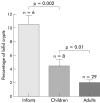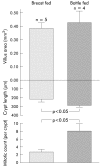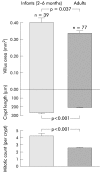Effect of breast milk and weaning on epithelial growth of the small intestine in humans
- PMID: 12377819
- PMCID: PMC1773445
- DOI: 10.1136/gut.51.5.748
Effect of breast milk and weaning on epithelial growth of the small intestine in humans
Abstract
Breast feeding and weaning are important physiologically significant luminal events that influence the growth of the small intestine in humans. A variety of factors including genetic preprogramming, systemic and local hormones, and permissive factors contribute and modulate intestinal growth. Here, we offer a view that integrates some of these factors, especially those relating to breast feeding and weaning.
Figures




References
-
- Grand R, Watkins J, Torti F. Development of the human gastrointestinal tract. A review. Gastroenterology 1976;70:790–810. - PubMed
-
- Klein RM, MacKenzie JC. The role of cell renewal in the ontogeny of the intestine. I. Cell proliferation patterns in adult, fetal and neonatal intestine. J Pediatr Gastroenterol Nutr 1983;2:10–43. - PubMed
-
- Klein R, MacKenzie J. The role of cell renewal in the ontogeny of the intestine. II. Regulation of cell proliferation in adult, fetal and neonatal intestine. J Pediatr Gastroenterol Nutr 1983;2:204–28. - PubMed
-
- Henning SJ. Functional development of the gastrointestinal tract. In: Johnson SJ, ed. Physiology of the gastrointestinal tract. New York: Raven Press, 1987:285–300.
-
- Ménard D. Growth-promoting factors and the development of the human gut. In: Lebenthal E, ed. Human gastrointestinal development. New York: Raven Press, 1989:123–50.
Publication types
MeSH terms
Substances
LinkOut - more resources
Full Text Sources
Other Literature Sources
Medical
